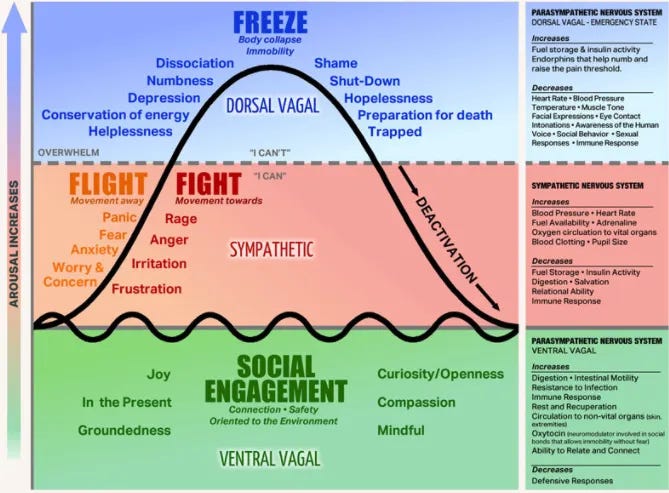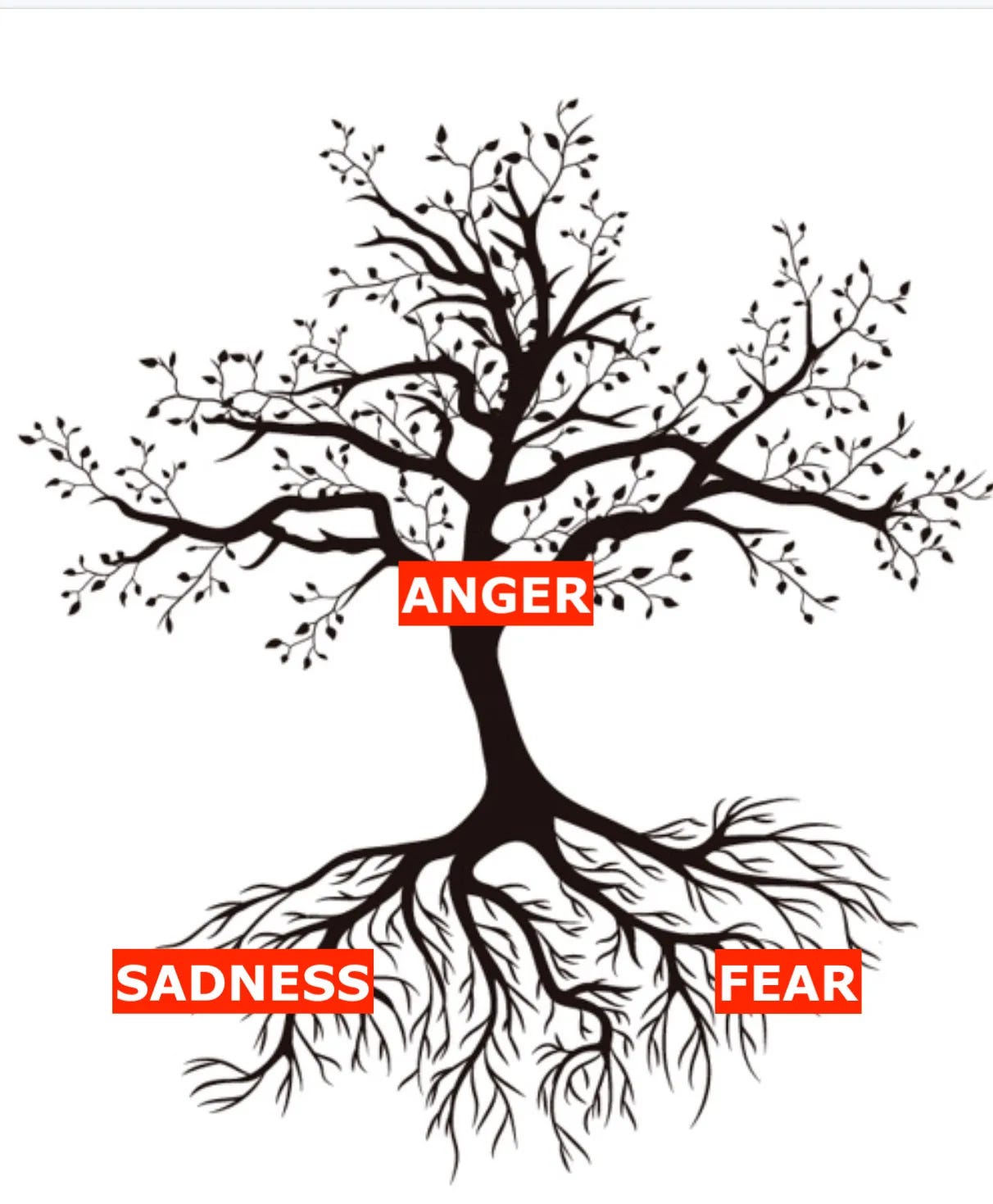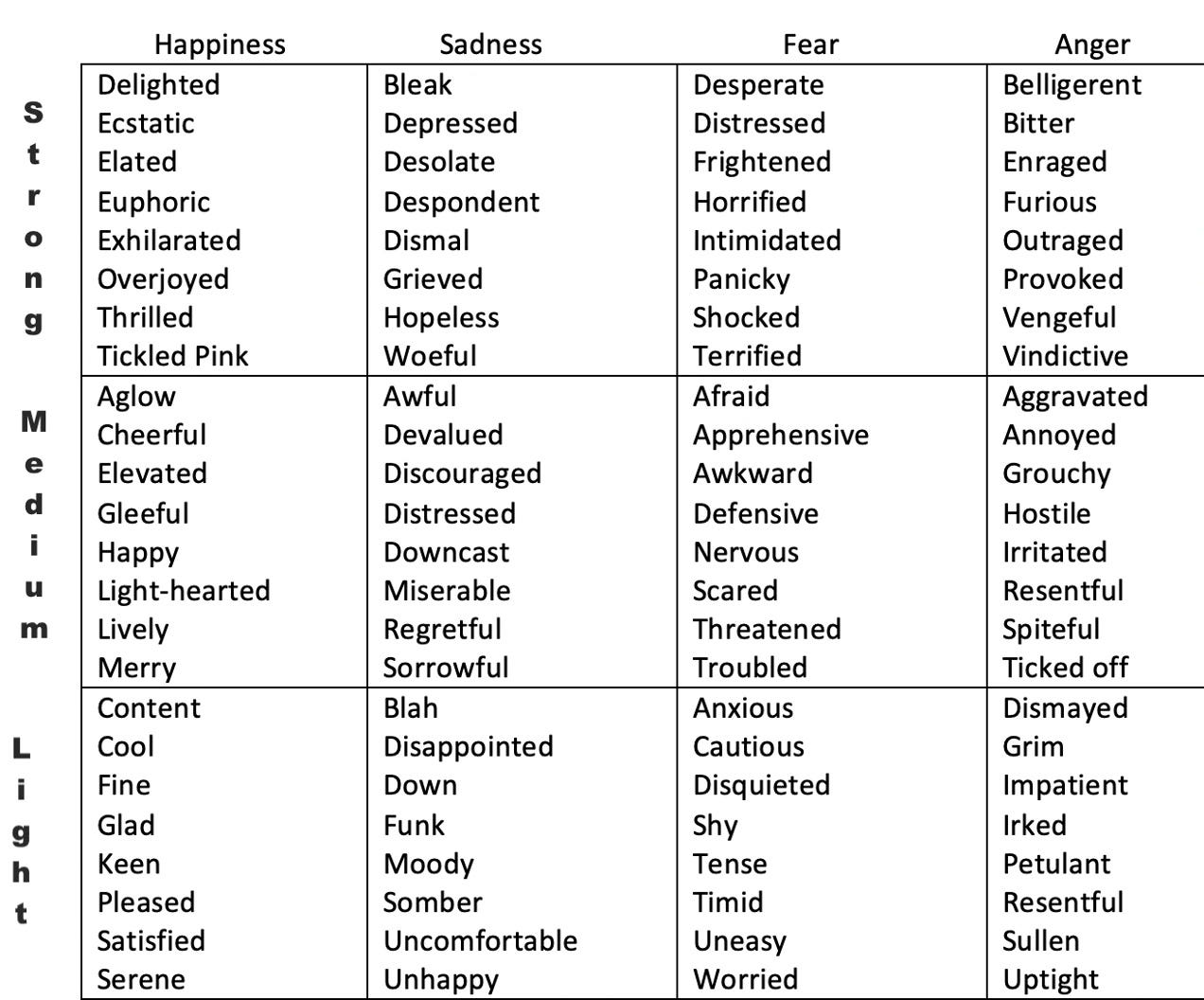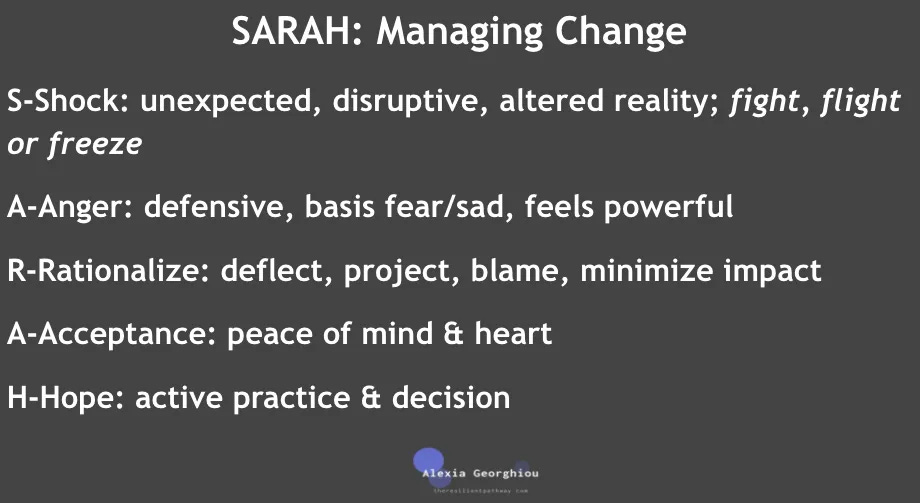Growth in Grief: The SARAH Model of Change
World Happiness Fest 2022 Presentation
For World Happiness Week, I created a fun tutorial, Find growth during your coping | The GUIDED Process.
Change is a part of our lives. Every process of change comes with a loss and that loss represents a coping process that requires work and determination to come out the other side with growth.
When I received news that my uncle in Cyprus has died September 2019, I felt SHOCK. It was the beginning of numerous unplanned events that were out of my control. Suddenly he was gone from this world. I remember my couch was in a different configuration in my living room. For the next few days, I spent time with my mom. She decided not to return to Cyprus, as she had just returned from a month long trip. We grieved from afar. Months later, I thought how he would not have fared well during the worldwide shut down as part of his daily routine was walking on the boardwalk at the beach with his friends, after a swim in the Mediterranean Sea. I again was in SHOCK. How could the world just shut down? It was like a dream, and that is the effect of it.
When we are in SHOCK, we are in the Blue. We Freeze up, Shut-Down, feel Hopeless, and Helpless. There could even be a sense of Dissociation where we separate our mind and spirit being from our body in effort to survive the pain by not feeling it. We cannot stay in this overwhelmed state of being, where we respond, 'I can't.' Our goal is to return to the, 'I can,' beginning with red with the goal of the calm pastures of the green zone.
Worksheet for Your Journaling
When was a time you felt shock?
What did the Blue/Freeze Zone experience feel like?
Describe it with a color.
Describe it within your body.
Were emotions evident?
What helped you feel again?
How often did you return to the Shock, once you felt the, 'I can?'
When we feel anger, this is progress. We have de-escalated from the initial shock and freeze of the blue zone to the red. The good news is, this is a journey and progress does not make perfection. We move from freeze to the red where we feel anger with impulses to fight or flight. I'm going to teach something here that is right between our eyes. We feel anger, however the emotionally intelligent express the underlying causes of anger. What leads to anger?
Whenever you feel anger, ask, 'what fears are leading to this anger?' and 'What sadness could be leading to anger.' When we feel a loss of control we either want to fight or flee. Different situations may elicit various responses that vary from situation. What may trigger me, may have not effect on you and vice versa. It's key not to judge another person's reaction, as we have no idea what their experience is.
What do we do when we experience the ANGER in SARAH? We express what could be causing us fear, loss of control and sadness. How do we do this? That is a whole course on emotions.
Emotions have a severity index, as shown above. Use this chart to identify the intensity of your fear and sadness. What word did you use? Keep that journal handy and record your emotions daily. Is there a pattern of underlying emotions to Anger? Increasing self-awareness is key to emotional intelligence development.
During the Rejection/Rationalization stage, we do everything to keep from accepting the reality of the situation. We deflect by changing the subject, even if it’s in our own mind with ourselves. Has someone avoided talking about something you specifically asked them about? This is what deflection looks like. They could be scattered in thought and possibly anxious, or they are clearly avoiding the question. This is normal when we are grieving and adjusting to loss and change.
Have you ever treated someone or something (think pet) really poorly and there wasn’t a rational reason? Perhaps you were projecting blame onto them without consciously realizing your actions. When people are hurting, they project their own feelings and insecurities onto others taking little to no responsibility. Loss and change hurts. This is a normal stage of grief, however, if it lasts too long there is concern. Our goal is to recognize our grief and move through these stages.
Have you ever minimized the impact of an event as an attempt to not feel the pain? Listen to your responses and reactions to others. Take a step back and ask yourself if there is more to your statements. Are you trying to reduce the effect it has on you as a wishful state of being? The best step we can take is to journal and then verbalize how difficult this is for us. This is not weakness, it takes a lot of strength to accept reality.
This is what the Rejection/Rationalizing stage may look like as well:
If only…..
If you had….
If I had…..
Why God…..
Keep these writings and visuals handy to remind yourself and those around you of the normalcy of these stages. This is not an excuse to be rude or disrespectful. It just is. So BE with it and work through it.
From the first day of the news, and event, we will be moving towards acceptance. Each stage brings us a step closer. The shock serves a purpose as the freeze gives us time to accept a new reality is occurring, even though we are not ready to fully accept it. The anger helps us acknowledge the pain. We rebel, rationalize, project, blame and minimize; hearing ourselves deflect and avoid the topic to ourselves and others. Then we need to move forward and this takes intention to do so. We could remain stuck in the first 3 stages, and our mental health will suffer. Experts give us about 6 months to not be ok with the reality. Anything past this could turn into a mental disorder. It hurts to accept reality of loss and change. Remember to acknowledge those emotions throughout. The reason to accept the reality is to move fully into the GREEN ZONE.
It’s in this GREEN ZONE where we connect, are open, grounded, and can find happiness again. The Ventral Vagal nerve runs down our spine, throughout our body, responding to our calm. When in the acceptance stage, we begin social engagement. Our digestive system works better. We have a stronger immune response with rest and recuperation. We can connect with ourselves, God and others and do not experience defensiveness as intensely or as often.
Memories can kick us back into red and this is ok. Create a plan that brings you back to green. Hope will arise and keep us steady and then we will grow and support others as they navigate. How will we help them? By listening with empathy. No advice giving. Learning these skills takes intentional effort and it is worth the investment.
The Sarah Model of Change introduces stages of change we walk through, emphasizing the normalcy of emotions as humankind. What is to note is the power of hope to bring healing as a daily choice. There are 5 stages we undergo, and this can cycle through time. Here are the stages we undergo:
Shock
Anger
Resistance
Acceptance, and
Healing/Hope
Our brain thrives on hope! This is an exercise recommended by psychologists to bring the brain to a positive state:
1. Create an actionable step (when check email)
2. Pay attention to that one task for a certain amount of time.
This nudges your brain to be positive & productive, reducing stress.
https://www.apa.org/monitor/oct05/mirror
Hope has power for our brain.
“When we are positive, our brains become more engaged, creative, motivated, energetic, resilient, and productive. This discovery has been repeatedly supported by research in psychology and neuroscience, management studies, and the bottom lines of organizations around the world.” Shawn Achor ” The Happiness Advantage
Shawn Achor asked participants to journal 3 things daily for 23 days in studies showed this rewired brain with fMRI technology.
What happens to the brain with such exercises?
Neurogenesis (the growth of new neurons) and synapto-genesis (new connections between between neurons). You can enhance the growth of those two things through meditation, reflective self-inquiry, mindfulness and asking meaningful questions and visualization.
Through visualization, you can turn an abstract hope into a picture that not only inspires you, but also guides you. According to a study called “The Future of Memory: Remembering, Imagining and the Brain,” the human brain can’t always distinguish between a memory and a vision of the future.
What are your experiences with this? Abstract hope can inspire and guide. As on the plane where the caretaker is asked to place the oxygen mask on themselves first before they care for the child, we need to begin with fostering hope in our own lives. Then we will be ready and able to begin answering the question, ‘how can we help the world feel hopeful?’
Happiness is about having hope. We continue working through the steps of change as we grieve any loss. How are you doing with your level of hope? Did you know happiness has a pattern in life? Where are you in this graph?
Life coaching is my specialty. Let’s connect for a quick chat!
Subscribe to The Knoxville Happiness Coalition podcast!







